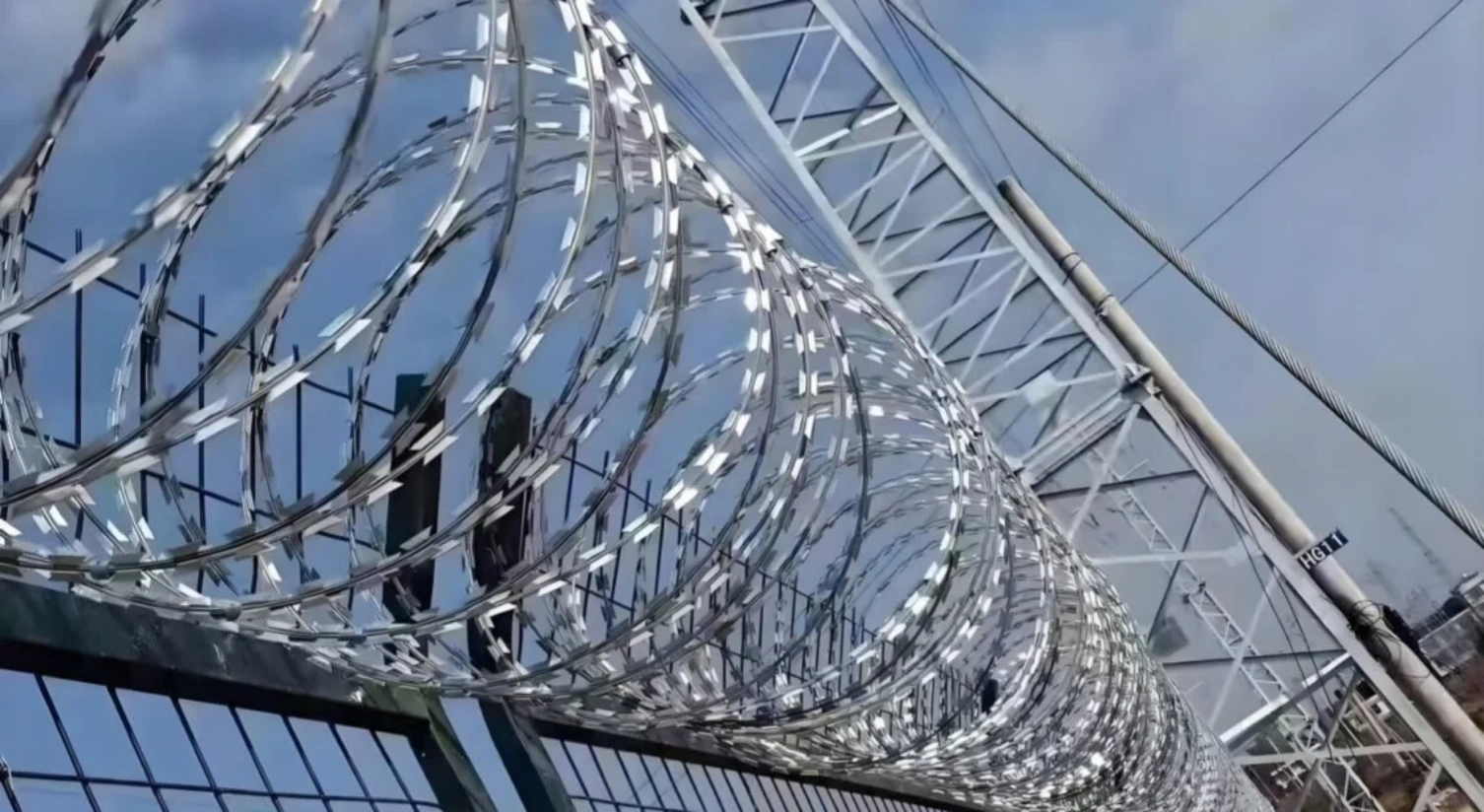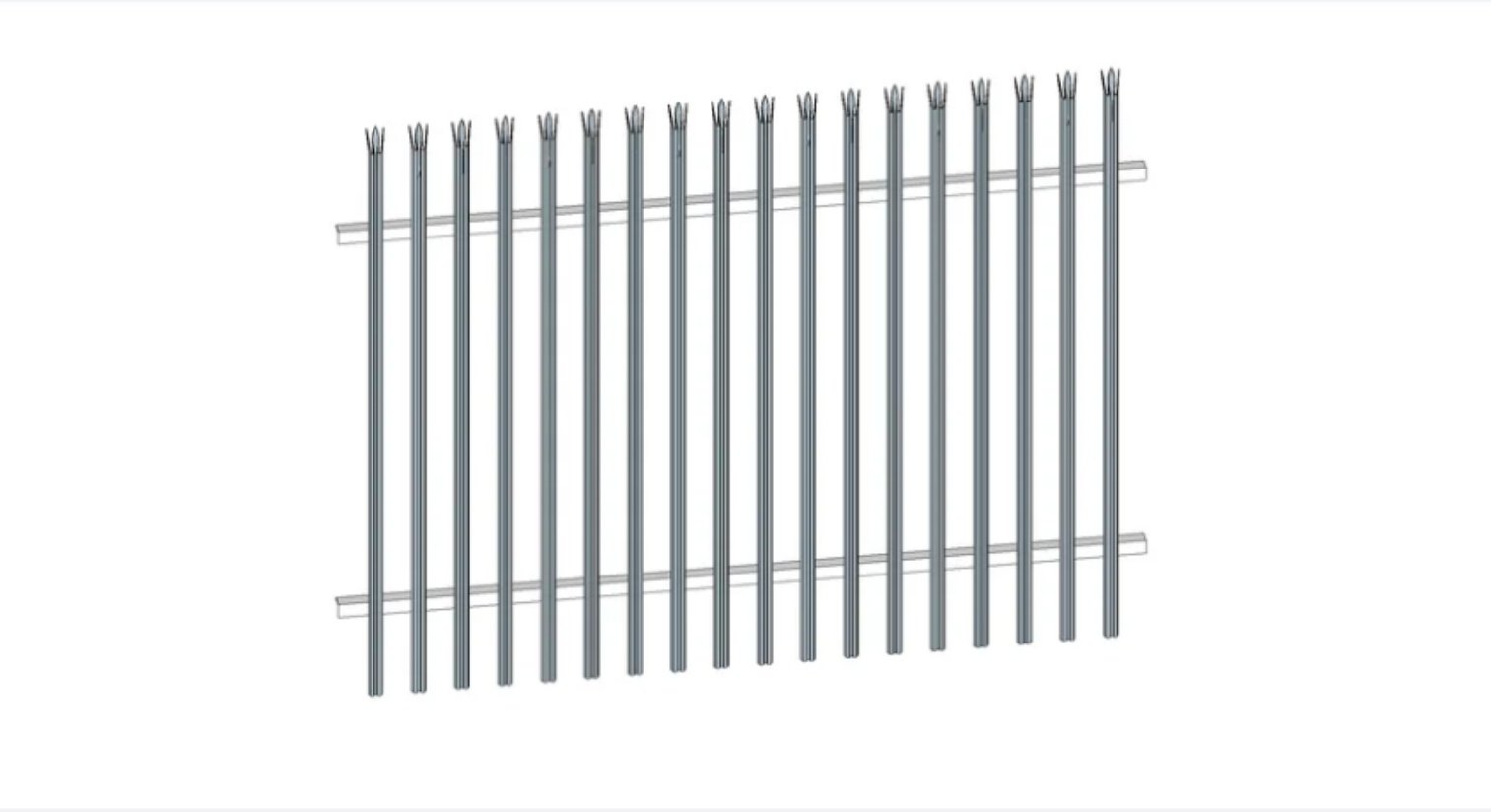Table of Contents
ToggleIntroduction to 3D Wire Mesh Fencing
3D wire mesh fencing is an innovative and versatile fencing solution that effectively combines aesthetics with functionality. This type of fencing is constructed using cold-formed I-shaped posts that provide remarkable structural durability. The design incorporates 3D single horizontal wire welded mesh panels, which not only enhances security but also contributes to its contemporary look. These panels are characterized by their three-dimensional profile, offering superior strength while maintaining a sleek and modern appearance.
The composition of 3D wire mesh fencing includes high-quality, corrosion-resistant materials that ensure longevity and reduced maintenance compared to traditional fencing options. The welded mesh design is engineered to withstand various environmental factors, making it suitable for diverse applications, from residential properties to commercial premises. Additionally, the vertical and horizontal wires are strategically dimensioned to deter climbing, thus enhancing security without compromising visibility.
Aesthetically, 3D wire mesh fencing stands out due to its clean lines and minimalistic profile, providing an elegant boundary that can easily complement any landscape. This is particularly beneficial for properties looking to maintain a visually appealing facade while ensuring security. The ability to select from a variety of colors and finishes allows for customization, enabling owners to fit the fencing within their specific design preferences.
When comparing 3D wire mesh fencing to traditional options, it becomes evident that this modern solution offers numerous advantages, such as improved robustness, lower maintenance requirements, and enhanced visual appeal. These benefits make it an increasingly popular choice for property owners seeking effective fencing solutions that do not compromise on style. With its unique design and durable construction, 3D wire mesh fencing is poised to address various fencing needs across different sectors.
Design and Structural Integrity
The design of 3D wire mesh fencing plays a crucial role in its overall functionality and durability. One of the standout features of this type of fencing is the integrated design of the posts, which are meticulously crafted to connect seamlessly with the mesh. This incorporation not only contributes to the aesthetic appeal of the fence but also significantly enhances its structural integrity. Each post is designed to serve as a robust anchor point, ensuring that the mesh maintains its tension and alignment over time.
Furthermore, dedicated interlocks and anti-theft bolts are essential components of 3D wire mesh fencing. The interlocking mechanisms are engineered to provide a secure connection between the panels, preventing unauthorized removal or tampering. These interlocks enhance the security of the fencing system, making it increasingly difficult for potential intruders to compromise the enclosure. The inclusion of anti-theft bolts further reinforces this security, as they are specifically designed to resist standard tools and methods used for unauthorized access, thus providing an additional layer of protection.
A notable advantage of 3D wire mesh fencing is its adaptability to various terrains. The structural integrity of this fencing solution remains intact even on uneven ground or slopes. The flexible design allows for adjustments and modifications that accommodate changes in elevation, ensuring that the mesh remains taut and securely attached to its posts regardless of environmental factors. This flexibility makes 3D wire mesh fencing an ideal choice for diverse installation scenarios, from residential properties to commercial sites, where both security and adaptability are of paramount importance.
Overall, the thoughtful design elements of 3D wire mesh fencing culminate in a product that is not only visually appealing but also exceptionally strong and secure. This emphasizes the importance of quality engineering in developing fencing solutions that meet contemporary security needs while remaining versatile across various installations.
Installation Methods and Adaptability
3D wire mesh fencing is renowned for its robust structure and versatility, making it a popular choice for both residential and commercial applications. The installation methods for this type of fencing can significantly influence the efficiency and outcome of the project. Two primary techniques are commonly employed: the push type installation and the installation of posts first, followed by the mesh.
The push type installation is characterized by its simplicity and speed. In this approach, the mesh panels are directly pushed into pre-drilled holes alongside the posts, which allows for a rapid setup. This technique is particularly advantageous for larger areas where swift installation is a priority. The lightweight nature of the 3D wire mesh makes it manageable for contractors and helps reduce labor costs while maintaining structural integrity.
On the other hand, the post-first installation method provides a robust framework before attaching the mesh panels. This technique ensures that the posts are securely anchored, maximizing the overall stability of the fencing. Once the posts are in place, the mesh panels are easily affixed to them. This method is beneficial when dealing with uneven terrain or areas requiring precise alignment, as it allows for adjustments before securing everything together.
Another notable advantage of 3D wire mesh fencing is its adaptability. The fencing can efficiently adapt to different angles and terrains, making it suitable for various applications. This versatility enhances its user-friendliness, catering to the demands of both professional contractors and DIY enthusiasts. Whether the installation site is flat, sloped, or irregular, the adaptability of these fencing systems contributes to their growing popularity. Both methods outlined provide effective solutions tailored to diverse installation challenges while ensuring the necessary durability and functionality of the fence.
Conclusion and Benefits of 3D Wire Mesh Fencing
In conclusion, 3D wire mesh fencing represents a modern and effective solution for a wide range of fencing needs. Its unique design provides not only aesthetic appeal but also robust security features that many traditional fencing options may lack. The three-dimensional structure is not only visually striking but also adds an additional layer of strength, making it difficult for intruders to breach. This characteristic is particularly valuable for properties requiring enhanced security, such as schools, industrial sites, and residential properties.
Another significant benefit of 3D wire mesh fencing is its ease of installation. Unlike more cumbersome fencing solutions, the installation of 3D wire mesh is straightforward and can often be completed in a fraction of the time. The prefabricated panels allow for quick assembly and are typically lighter than traditional materials, reducing labor costs and time spent on site. This efficiency in installation makes it an appealing option for both contractors and property owners.
Furthermore, the adaptability of 3D wire mesh fencing ensures that it can fit into a variety of outdoor environments. Whether it be urban housing developments, agricultural settings, or commercial establishments, this type of fencing can be tailored to meet specific needs and conditions. Its versatility accommodates various heights, colors, and finishes, allowing for customization that aligns with the surrounding landscape.
As you consider fencing options for your property, it may be worthwhile to evaluate the benefits of 3D wire mesh fencing. With its blend of security, aesthetic versatility, and ease of use, it stands as a compelling alternative to traditional fences, effectively addressing modern security demands while enhancing the visual appeal of outdoor spaces.




